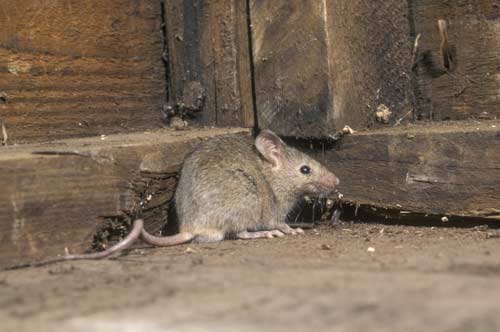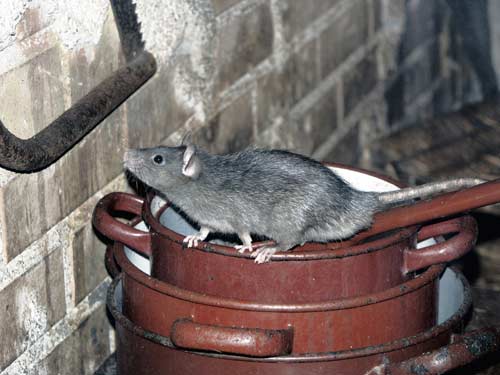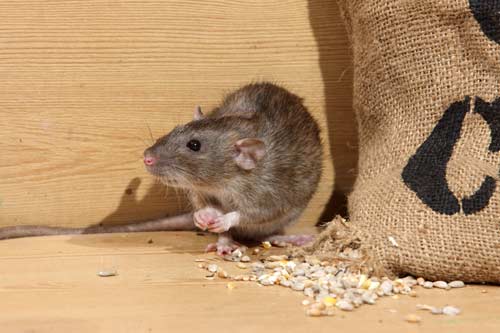Rodent Identification & Facts
Norway Rat (Rattus Norvegicus)

PHYSICAL CHARACTERISTICS
Strong body, well-defined head, has as elongated and quite pointed nose. Medium-sized ears. Long, flaked, ringed tail; shorter than the head and body combined.
COLOR
Rust brown to rust, passing by grey brown.
SIZE AND WEIGHT
Length from head to body: 19-26 cm. Length of tail: 16-20 cm. Weight: 200-475 g.
REPRODUCTION
Gestation period: 22-24 days. Litter: 6-12 young. Number of litters per year: 3-5. Life span: 1 year, but the population renews itself very fast.
BIOLOGY
The most common rodent. Found especially in low humidity areas. Always needs a source of water, as its water needs are substantial. It is omnivorous. Adapts itself to any surroundings where it lives. Causes enormous damage by gnawing on doors, wood-work, beams, electrical wires, pipelines, etc… Vector of diseases caused by its fleas (foot-and-mouth disease, typhus, plague, etc…).
Roof Rat (Rattus rattus)

PHYSICAL CHARACTERISTICS
Tail longer than head and body combined. Well-developed ears. Flaked, hairless tail. Good looking, well-lustered fine fur.
COLOR
Dark grey with silver reflection.
SIZE AND WEIGHT
Length from head to body: 16-23 cm. Length of tail: 17-28 cm. Weight: 100-200 g.
REPRODUCTION
Gestation period: 21 days. Litter: 5-10 young. Number of litters per year: 3-5. Life span: 1-2 years.
BIOLOGY
Found everywhere. Animal generally nocturnal. Lives in dry biotops (roofs). Omnivourous and carnivorous; eats all provisions. Very distrustful; avoids traps and all new situations. Vector of numerous diseases.
House Mouse (Mus musculus)

PHYSICAL CHRACTERISTICS
Small size. Pointed nose. Small black eyes. Long, wide ears. Long tail covered with fine fur. Typical odor due to its urine.
COLOR
Differs according to habitat; from dark brown to rust brown.
SIZE AND WEIGHT
Length from head to body: 6.8-9 cm. Length of tail: 5-7 cm. Weight: 10- 20g.
REPRODUCTION
Gestation Period: 21 days. Litter: 6-8 young. Number of litters per year: 4-6, at times as many as 10. Life span: 2 years.
BIOLOGY
Found buildings where it eats all foods; attacking papers, books, clothing, insulation material, etc… Emerges usually at night, but also at daytime in uninhabited premises.
Rodent Facts
Rodent activity used to be more prevalent in the winter, but as the rat, mouse, and squirrel populations have grown, it has become a problem all year long.
Call NOW for a Free Evaluation! 281-698-0229